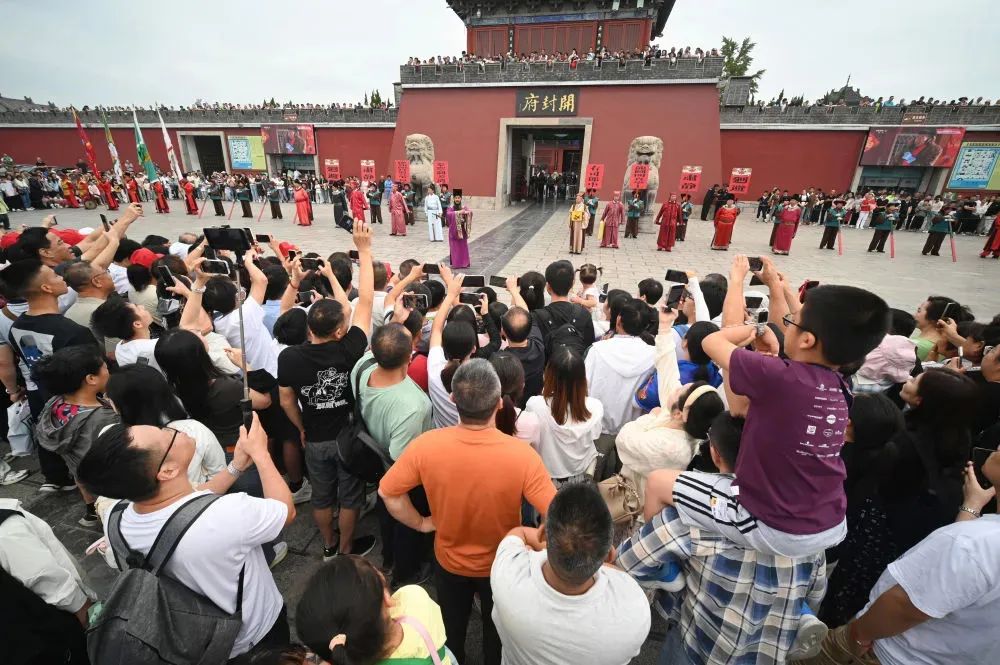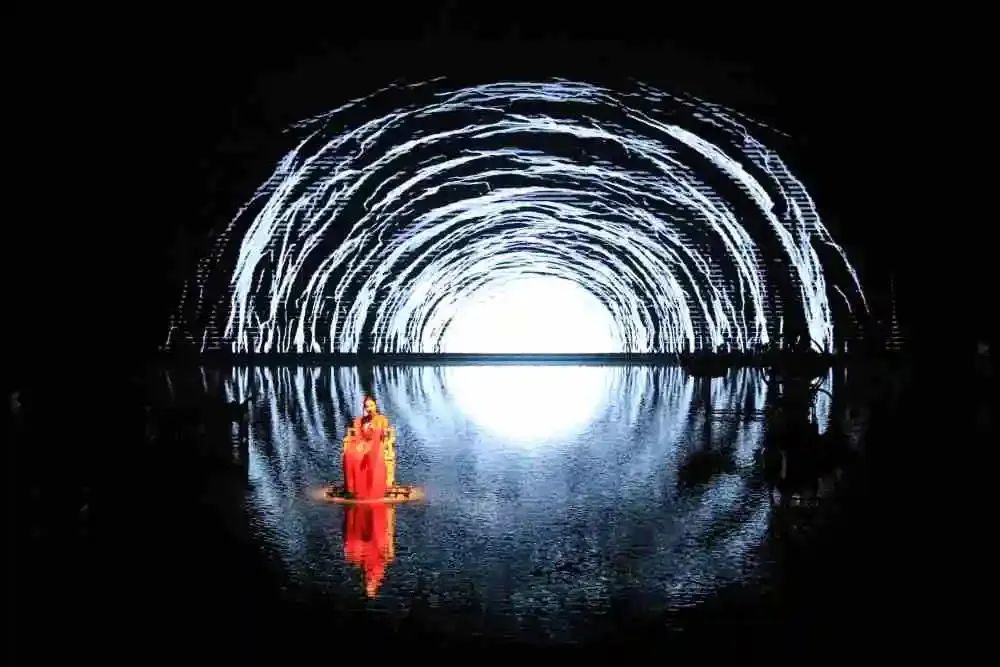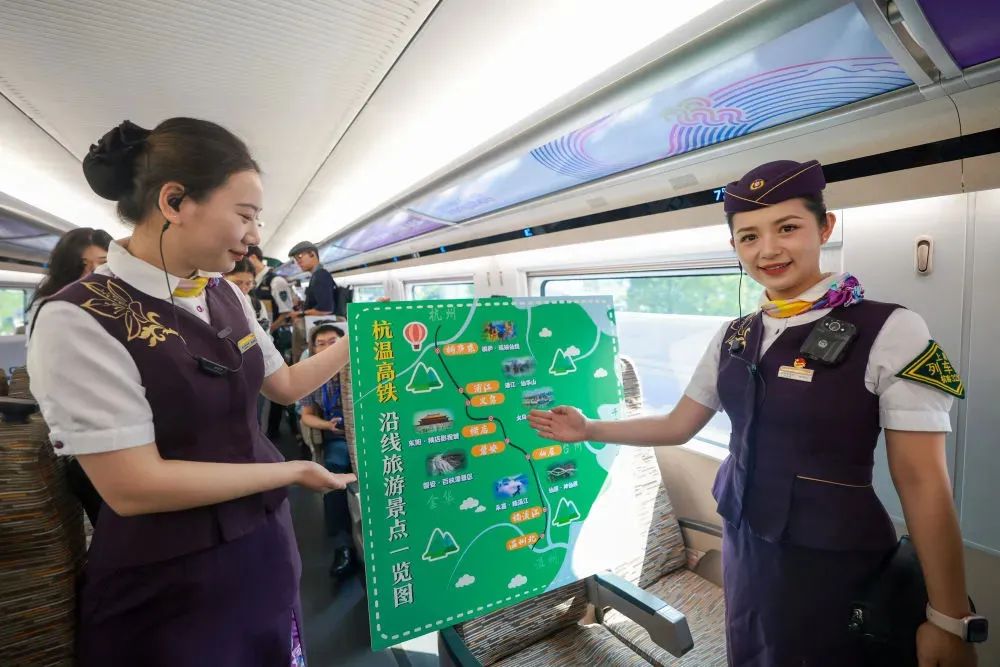Xinhua Viewpoint | Why does the “3-hour travel circle” continue to attract fans?
After get off work on Friday, I went straight to Beijing West Railway Station, and arrived in Handan after 2 hours and 8 minutes by high-speed rail. I checked in at a special snack bar in the evening. On Saturday and Sunday, I visited the East Taihang Scenic Area and Xiangtangshan Grottoes, a day of landscape and a day of culture. I took the evening high-speed rail back to Beijing to welcome a new week... This is the busy and rich weekend life of Xiao Wang, a Beijing "post-90s" boy. In recent years, the "3-hour tourism circle" around the central city, with self-driving and high-speed rail as the main means of travel, has attracted countless fans. "Micro vacations" of two or three hours by car and two or three days are very popular. What changes does the rise of "micro vacations" reflect in the tourism market and people's lifestyles? On the weekend, Xiao Wang said that at first he just made full use of every small holiday to explore the counties and villages around Beijing, and then gradually developed to "spend the weekend in another city."
"Compared to the uncontrollable nature of long-distance travel, it is more important to plan every weekend well." Xiao Wang said that influenced by him, many of his friends around him have also begun to try taking short-distance high-speed trains to start a weekend "micro-vacation."
In first- and second-tier cities, more and more young people are taking advantage of their weekends to "shopping and eating" in a nearby city, and the popularity of travel within the "3-hour travel circle" continues to rise.
Data from multiple platforms show that during the just-concluded Mid-Autumn Festival, orders for medium- and short-distance "micro-vacations" led the growth rate, with growth particularly evident in high-speed rail and self-driving tours across cities within the province and across cities in neighboring provinces.
According to data from the Ctrip platform, the travel radius of holiday high-speed rail travel orders is about 361 kilometers, which is nearly 30% shorter than the first three days of the Mid-Autumn Festival and National Day holidays last year. Tongcheng Travel data shows that the demand for short-distance travel in urban agglomerations such as the Yangtze River Delta, Pearl River Delta, Beijing-Tianjin-Hebei, Chengdu-Chongqing, and Central Plains is strong, and the high-speed rail travel market within 3 hours is the most active. On the Fliggy platform, domestic car rental bookings during the Mid-Autumn Festival increased by 31% compared with the Dragon Boat Festival holiday.
 On September 16, tourists watched the "Opening the Court to Welcome Guests" ceremony in front of Kaifeng Mansion in Kaifeng City, Henan Province. Xinhua News Agency (Photo by Li Junsheng) "So close, so beautiful, come to Hebei for the weekend." This catchy slogan has now become a "hot topic" on the Internet, "attracting traffic" for Hebei tourism. Big data passenger flow statistics show that in 2023, Hebei Province will be the first choice for Beijing tourists, and nearly 40% of Beijing tourists will choose Hebei Province and Tianjin as their destinations when choosing to travel outside of Beijing.
On September 16, tourists watched the "Opening the Court to Welcome Guests" ceremony in front of Kaifeng Mansion in Kaifeng City, Henan Province. Xinhua News Agency (Photo by Li Junsheng) "So close, so beautiful, come to Hebei for the weekend." This catchy slogan has now become a "hot topic" on the Internet, "attracting traffic" for Hebei tourism. Big data passenger flow statistics show that in 2023, Hebei Province will be the first choice for Beijing tourists, and nearly 40% of Beijing tourists will choose Hebei Province and Tianjin as their destinations when choosing to travel outside of Beijing.
"We hope to rely on the super-large weekend tourism source market in Beijing-Tianjin-Hebei and surrounding provinces to create first-class domestic weekend tourism products, services and environment, so that tourists can turn the 'Hebei weekend' into a 'Hebei festival' and enjoy a wonderful tourism life." said a relevant person in charge of the Hebei Provincial Department of Culture and Tourism.
Shanghai has launched special tourist train routes to cities such as Yancheng in Jiangsu, Jiaxing and Quzhou in Zhejiang, Lu'an and Huaibei in Anhui; Chongqing's Tongliang District and Dianjiang County have strengthened the integration of culture and tourism to build "micro-vacation" tourist destinations in the Chengdu-Chongqing region... The "3-hour tourism circle" continues to release market vitality.
How did the “3-hour tourism circle” of new transportation, new demands and new experiences come into being?
First of all, transportation is becoming more and more convenient.
Departing from Shanghai in the morning, you can go boating on the West Lake at noon, or stay in Anji B&B, or wave to the Welcoming Pine on Huangshan Mountain and take a bite of delicious sesame cake. Similarly, residents of these cities can take the high-speed rail to Shanghai within 3 hours and spend a wonderful day.
Nowadays, high-speed rail and intercity rail transit are becoming more and more popular, the connections between urban agglomerations are becoming increasingly close, and weekend cross-city vacations are becoming as common as cross-city commuting.
"When traveling by high-speed rail or bullet train, the itinerary is punctual and controllable, the transportation is fast and convenient, and a more leisurely itinerary can be arranged at the destination, which is suitable for travel for us middle-aged and elderly people." Mr. Qian, a 68-year-old Shanghai citizen, said that the entire journey from his home in the city center to Hongqiao Railway Station by subway and ticket inspection only takes about an hour.
Secondly, people’s travel needs are becoming more and more diverse.
"Micro-vacation" meets people's psychological need for a short "leave". Compared with the usual "vacation", it is not only a shortening of distance, but also a concentration of experience.
Xiao Wang told the reporter that after working, he has more disposable income and more autonomy in how he arranges his time. He can explore "niche" destinations in depth and "go whenever he wants."
Some people also enjoy the "slow time" of traveling with relatives and friends. "The travel time is shortened to the maximum extent, and there is plenty of time for fun." Ms. Peng, a tourist from Guiyang, and her family of three took the high-speed rail to Leshan, Sichuan during the short holiday. She believes that what attracts them now is no longer the "check-in" sightseeing tour, but spending two or three days to integrate into local life and experience different customs and practices.
In addition, tourism destination formats are becoming more and more attractive.
36 tall carved wooden doors opened slightly, and the actors danced gracefully; the light and shadow on the stage changed, and layers of water curtains fell from time to time... "It's so shocking!" The audience exclaimed in unison.
 On July 23, 2023, actors performed at the "Only Dream of Red Mansions·Drama Fantasy City" park theater. Xinhua News Agency reporter Wang Min photographed the "Only Dream of Red Mansions·Drama Fantasy City" theater in Langfang, Hebei Province, which combines scene installation art and stage immersion technology to bring tourists a new experience. Whether you drive, take the high-speed rail or take a through train from Beijing, you can arrive within 2 hours.
On July 23, 2023, actors performed at the "Only Dream of Red Mansions·Drama Fantasy City" park theater. Xinhua News Agency reporter Wang Min photographed the "Only Dream of Red Mansions·Drama Fantasy City" theater in Langfang, Hebei Province, which combines scene installation art and stage immersion technology to bring tourists a new experience. Whether you drive, take the high-speed rail or take a through train from Beijing, you can arrive within 2 hours.
"Go to a city for a performance" and "Go to a mountain for an outdoor experience". In recent years, various destinations have developed diverse cultural and tourism industries to make the trip worthwhile for tourists within the "3-hour travel circle".
"Micro-vacations bring tourists a new experience of 'fast travel and slow tours', promote the modernization of the tourism industry, and provide opportunities for the development of more regions and high-quality employment for more people," said Dai Bin, president of the China Tourism Academy.
Quality upgrades need to be fully strengthened. Reporters have noticed that after the popularity of "micro-vacations", some emerging destinations have encountered problems such as homogeneous construction and marketing. Many tourists found themselves deceived when they went to the so-called "Little Altay" and "Oil Painting Wonderland": the beach was actually a construction site, the "grassland" had become a wasteland, and the blue sky and clear water were all due to filters... On the one hand, these "exquisite" landscapes created out of a quick success mentality have damaged the reputation of the tourism industry; on the other hand, the "3-hour tourism circle" is often geographically close and culturally similar, and the development of tourism resources should also consider digging into characteristics, coordinating and sharing, and developing in a differentiated manner.
In addition, some tourists go to undeveloped mountainous areas and waters around cities to experience a more "wild" travel experience, and recommend them to other tourists on social platforms. The safety risks behind these behaviors cannot be ignored, and the platforms and regulatory authorities should assume management responsibilities.
 On September 6, staff of the Hangzhou Passenger Transportation Section of the Railway introduced tourist attractions along the Hangzhou-Wenzhou High-speed Railway on the G9505 train. Photo by Xinhua News Agency reporter Jiang Han. The problem of the "last few kilometers" has become increasingly apparent. Many tourists complained about the inconvenience of renting a car after arriving quickly and the limited carrying capacity of the scenic spot.
On September 6, staff of the Hangzhou Passenger Transportation Section of the Railway introduced tourist attractions along the Hangzhou-Wenzhou High-speed Railway on the G9505 train. Photo by Xinhua News Agency reporter Jiang Han. The problem of the "last few kilometers" has become increasingly apparent. Many tourists complained about the inconvenience of renting a car after arriving quickly and the limited carrying capacity of the scenic spot.
Professor Lou Jiajun of East China Normal University analyzed that all localities should pay attention to optimizing the "railway + scenic area" tourism routes and transportation methods, and improve the connection from high-speed rail stations to scenic spots; optimize the "heat distribution map" of tourists, and promptly remind tourists to divert; use scientific and technological means to improve the efficiency of tourists entering and exiting, etc.
Many industry insiders believe that the rise of "micro-vacations" reflects a change in tourists' consumption concepts. The traditional tourism income that relies on shopping has declined, and the demand for spiritual and entertainment consumption has increased. This requires the services provided by the destination to further match the needs of tourists. In addition to the demand for high-quality accommodation, soft needs such as food, art, social interaction, health, entertainment, and parent-child interaction should be paid attention to, expanding diversified consumption scenarios.
"Looking to the future, 'micro-vacation' destinations will need to spend more energy to build and promote a tourism image that adapts to the development of the times, improve infrastructure and public services, introduce financial and industrial capital, cultivate business entities, and continuously improve tourists' satisfaction and the sense of gain of local urban and rural residents," said Dai Bin.
Source | Xinhua News Agency Client Reporter | Yang Zhanfei, Chen Aiping, Du Yifang Editor | Xue Shiyi Please indicate the source for reprinting